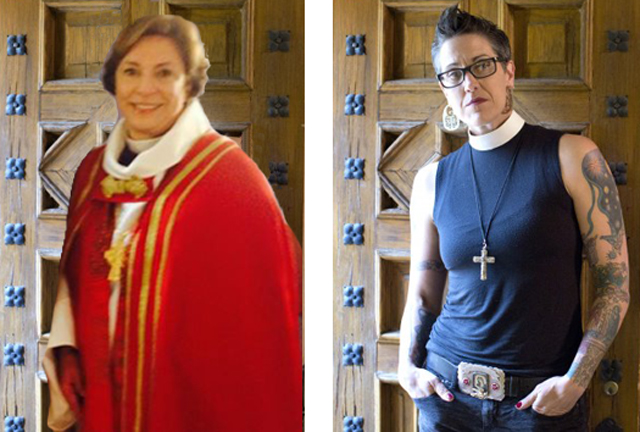 Old and New Testaments
Old and New Testaments
(Old and New Measuring Sticks)
The Old Testament Lesson for the Second Sunday in Advent is Isaiah 11:1-10.
Isaiah 11:1-10
A shoot shall come out from the stump of Jesse, and a branch shall grow out of his roots. The spirit of the LORD shall rest on him, the spirit of wisdom and understanding, the spirit of counsel and might, the spirit of knowledge and the fear of the LORD. His delight shall be in the fear of the LORD. He shall not judge by what his eyes see, or decide by what his ears hear; but with righteousness he shall judge the poor, and decide with equity for the meek of the earth; he shall strike the earth with the rod of his mouth, and with the breath of his lips he shall kill the wicked. Righteousness shall be the belt around his waist, and faithfulness the belt around his loins. The wolf shall live with the lamb, the leopard shall lie down with the kid, the calf and the lion and the fatling together, and a little child shall lead them. The cow and the bear shall graze, their young shall lie down together; and the lion shall eat straw like the ox. The nursing child shall play over the hole of the asp, and the weaned child shall put its hand on the adder’s den. They will not hurt or destroy on all my holy mountain; for the earth will be full of the knowledge of the LORD as the waters cover the sea. On that day the root of Jesse shall stand as a signal to the peoples; the nations shall inquire of him, and his dwelling shall be glorious.
 In discussing today’s lesson you might hold a yardstick. You can wield that yardstick like a king’s scepter while you talk.
In discussing today’s lesson you might hold a yardstick. You can wield that yardstick like a king’s scepter while you talk.
Isaiah is speaking to people accustomed to monarchies. If the Jews lacked a king, there were plenty kings nearby who could exert power over them. The idea of a benign king was attractive to them, especially when unfriendly kings were always nearby. The desire for a king was how Saul and David came to power. They were hand-chosen by God. Their genetic credentials were a little “iffy.” But you work with what you have!
David was descended from a rich owner of sheep. He was the grandson of Ruth, whose biblical story has her gleaning in the fields. The house of Jesse is a different type of royalty! That’s only the beginning of how things are about to change!
Isaiah again invokes vivid imagery to deliver his message.
The nursing child plays over the nest of the poisonous snake.
Toddlers reach into the adder’s den.
Wow!
It doesn’t make sense to today’s parents who rush to cover all electric outlets in the house before their newborns start crawling.
That’s the point of Isaiah’s message today. What is about to happen is NOT going to make sense.
I’ll believe it when I see it.
What’s coming will make our old ways of viewing the world useless.
Isaiah gets right to the point. The new ruler that is coming from the stump or rod of Jesse will not judge by what he sees or hears.
Wait a minute! Isn’t that what every juror is asked to do? Weigh the evidence that we can see and hear?
No. This new ruler will judge by a different measure.
He will judge with righteousness and faithfulness.
Here you can refer to popular imagery of the three monkeys. Have three members strike the pose!
Hear no evil. See no evil. Speak no evil.
Isaiah knows that we can be tricked by what we hear and what we see. We often believe liars and side with them even when all reason tells us “something’s wrong here.” People with evil intent are often masters of deception.
Our visual perceptions can be easily manipulated, as well. I know. I’ve made a living retouching photos!
One of my favorite challenges was to turn a frown upside down. The client wanted to use the image of boy, but he looked downright glum. Cut. Paste, Rotate. Smooth the edges. Voilà!
Isaiah warns us that our system of justice is about to be turned upside down.
There will be a new rule on earth. A child will rule. The mighty (the lions and tigers and bears) will follow. It doesn’t make sense to us when we measure with old yardsticks. But our new yardsticks—the yardsticks of righteousness and faithfulness—will give us a truer measure.
And it’s all coming soon! Stay tuned.






